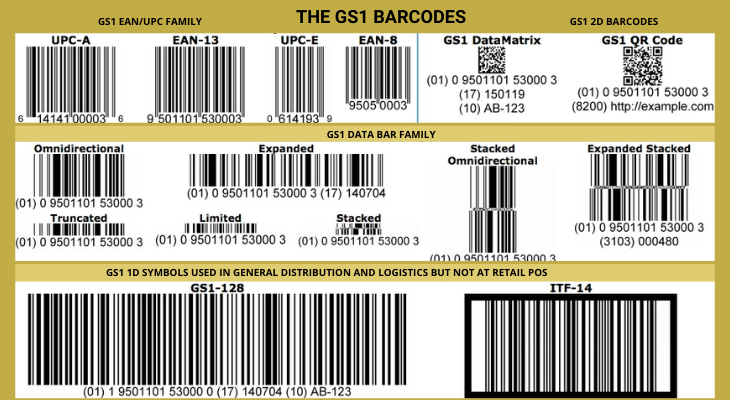Barcode Registration
Apply Online for Bar Code Registration
Convenient and Secure Online Process.
Free Consultation
Today's Offer
Barcode Registration

Direct Call: Mumbai : 9167687835
Direct Call: Pune : 9028055500
BARCODE REGISTRATION
Overview
Barcoding is a sequence of parallel vertical lines (bars and spaces) that bar code scanners can read.. The black bars and spaces in a bar code are decoded by a barcode scanner to show a particular 12 or 13 digit long series of numbers (the barcode number')
A barcode is a machine-readable image made up of parallel lines with different widths and spacing between them, as well as digits. The product information like product numbers, serial numbers, and batch numbers are instantly encoded using barcodes.
It is commonly used for product identification in supermarkets, clothing shops, malls, and other retail establishments, and has inherent benefits such as the reduction of mistakes, cost-effectiveness, time-saving, and ease of inventory management. This global identification system makes it easier for all parties in the supply chain to identify products, including suppliers, logistics, and wholesalers.
WHY TO USE BAR CODE ?
Getting a BAR Code is not compulsory for all kinds of businesses, but having a Bar Code of the products gives added benefits to the owner than those having no bar codes.
- Bar code has now been made compulsory for businesses dealing in Pharmaceuticals, Trading with Super Markets, Furnishing Goods and Services to Army canteens, etc. It's used on product packaging, price tags, carton labels, invoices, and even credit card bills all over the world.
- For manufacturers who want to market their products globally, Bar Code shall assist the other countries to allow their products widely.
- The bar code becomes unique and universal and can be accepted anywhere in the world. Barcoding is a global concept today.
- Even now, the majority of retail stores use a barcode system, and many more will do so shortly.
- Customers' perceptions of the company's product quality and standards are influenced by the bar code.
The Process of Obtaining Bar Code
- 01.
Type And Number
The barcode is of many types and it can be used in different lot sizes. The process starts with the identification of requirements by the candidate.
- 02.
Arrange Documents
With barcode filing, there are multiple documents like the balance sheet to show the turnover of the company, MOA, etc to be attached.
- 03.
Government Fee
The government fee is charged in form of a demand draft after deciding the lot size and the validity period of the barcode to be procured.
- 04.
Delivered
We pass the barcodes within 2 days after getting the order along with full documents, dd, and fulfillment of our expert fee for the service.
GS1 India Barcode Registration
GS1 India is a not-for-profit global standards association for Barcode registration. The Ministry of Commerce and Industry, Government of India (GOI), APEDA, CII, FIEO, IMC, FICCI, ASSOCHAM, Spices Board, IIP, and BIS are founding members of GS1 India, which is registered under the Societies Registration Act 1860.
Types of Barcode
Basically GS1 barcodes hold information like products,assets,logistic units and equipments.Basically GS1 handles various types of barcode including one-dimensional barcode(such as GS1 EAN/UPC,GS1-128,ITF-14,GS1 DataBar),two-dimensional barcode(such as GS1 DataMartix and GS1 QR Code etc).

-
GS1 EAN/UPC Family Barcodes
EAEAN/UPC Barcodes are fit for the retail point of sale (POS) because they are invented for the high volume scanning environment.
-
EAN -13
The International Article Number, also known as the European Article Number, is a 13-digit number used in Europe, India, and other countries for barcodes.
-
UPC – A
The Universal Product Code, or UPC – A, is a 12-digit barcode that is commonly used in the United States, Canada, the United Kingdom, Australia, and New Zealand.
-
GS1 Data Bar Family Barcodes
Data Bar barcodes are commonly used to label fresh food items. These barcodes contain information like the item’s batch number or expiry date and the weight of the item. DataBar barcodes are usually used in retail outlets and can be read by laser scanners. They are shorter than normal consumer-facing barcodes
-
GS1 1D Barcodes
One-dimensional barcodes i.e. GS1-128 & ITF-14 are the most adaptable 1D barcodes that enable items to be tracked by global supply chains. It is used in general distribution and logistics.
-
GS1 2D Barcodes
Two-dimensional, or 2D barcodes, display data using two-dimensional symbols and shapes. They're similar to linear 1D barcodes, but they can carry more data per square inch. It is used in a broad range of businesses, from manufacturing and warehousing to logistics and healthcare.
Fees For Barcode Registration in India
Barcode registration prices in India varies based on the following:
- Turnover of the company
- Number of barcodes required
- Subscription period
Depending on all these factors, the fees differ from around Rs. 24,000 to Rs. 2,30,000.
Documents Required for Barcode Registration
- Certificate of incorporation/partnership deed
- Memorandum of Association/Articles of Association
- GST/VAT registration certificate
- PAN card copy of Proprietor/ Company/partnership Firm
- PAN Card Copy of all the members/ Directors
- Copy of audited balance sheet as of 31st March.
- Any other registration copy by the government
- Product classification sheet.
- Letter requesting allotment of barcode
- Copy of canceled cheque
Advantages of Barcode
-
Reduces error
Since the information on the barcode is all automatic, the chances of errors are decreased since there is no human intervention in the form of data entry.
-
Cost-effective and convenient
Barcodes are simple to obtain, cost-effective, and convenient to print, and they can also be customized.
-
Detailed information
Barcodes provide details about the product, such as product numbers, serial numbers, and batch numbers, and thus ensure that the products are authentic.
-
Optimized inventory
Since all product information is recorded in the barcode, the flow of items is seamless and the supply chain is moved without difficulty.
-
Time-saving
A barcode can be registered to save a lot of time. The code can be scanned with a barcode reader to obtain the details.
-
Accurate and faster billing
All information connected to the barcode is automated and accurate, allowing for better and faster decision-making.
-
Unique and global identification
The barcoding scheme enables unique and internationally recognized identification, ensuring that no two items have the same code.
VALIDITY OF BAR CODES
The validity of Bar Codes is based upon the will of the applicant for which he wants to apply. It may be 1, 2, 5, or 10 years. And the fee is determined by the number of years for which the bar code has been used.
Frequently Asked Questions ?
Barcode is a system devised to encode data such as product number, serial number, batch number, etc. The barcode representation can be scanned electronically using either a laser or a camera-based device to automatically recognize the product and its specifications, resulting in a revolution in supply chain management. It allows trading partners to detect and monitor product movement across the supply chain automatically. It collects data in a consistent and organized manner and shares it with trading partners and customers, ensuring the safety and security of goods in the supply chain.
Each product variant, such as form, size, color, variety, flavor, and weight, requires a separate barcode, and any manufacturer or retailer must recognize the product as unique according to the requirements outlined below when applying the bar code:
A new product variant is available (shape, style, color, flavor) a name change Changes to the product summary Contents as mentioned Changes in height, weight, or volume have been announced, and a gift has been added.
The barcode comes in a box of 100 and is multiplied by that number, i.e. 100, 1,000, 10,000, and 1 lac.
Each item is identified as a unique product as per the standards described above and will require a separate barcode. If two products having different barcodes is combined to make a promotional pack, it is regarded as a new item for barcode and thus will need a separate barcode number.
In the 1970s, the United States Patent and Trademark Office (USPTO) produced the first barcode. It is a 12-digit barcode that is commonly used in the United States. A few years later, the 13-digit EAN barcode was created for international use. Except in the United States, the EAN barcode is commonly used in India and around the world. Both barcode scanners, in general, can read all barcodes.
Except for books, magazines, periodicals, and journals, the barcode would operate on any retail product. You can apply for an International Standard Book Number if you have a book (ISBN)
For books, an ISBN number is needed. It allows for the identification of a publisher and the determination of a specific addition of a specific title for a specific format within the production by the publisher. There is no legal requirement for an ISBN Number, but if you want to sell your book through major bookstore chains or e-commerce sites like Amazon, you'll need one. ISBNs, like barcodes, help with internal sorting and purchasing. Serials, Periodicals, and Journals all need an ISSN.


